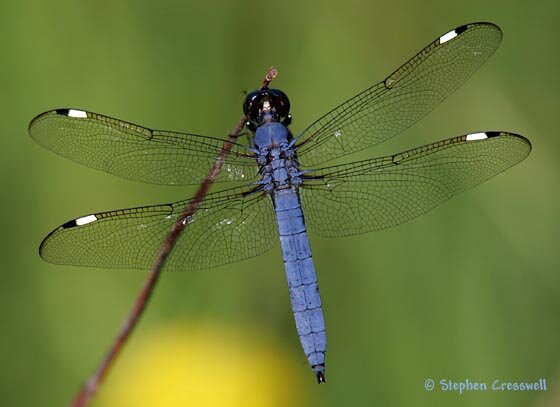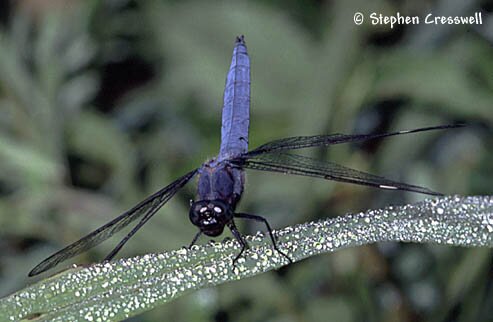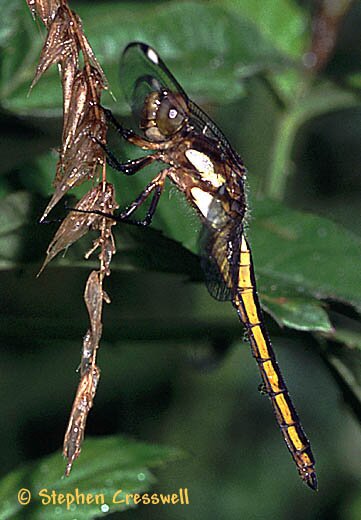

Family: Libellulidae
Length: typically 40-46 mm
While not among West Virginias four or five most abundant species, the Spangled Skimmer may be present in large numbers where it does live. It is found primarily at ponds and lakes, occasionally at slow-moving streams.
The mature males are uniformly bluethe top and sides of the thorax, and the top and sides of the abdomen, are all blue. The only accent colors are provided by the eyes, face, and stigmas. The eyes are dark green to black, the face black, and the stigmas half-white, half-black.
This species may be identified by the stigmas alone. Both male and female, mature and immature, have the unusual, bright stigmas that give the species its common name. No other species in our area has stigmas that are remotely similar.
Both sexes have amber areas along the leading edges of the wings, but this is hard to see in the field.
 Females are yellow and brown. The dorsal surface of the abdomen is yellow, with a broad brown stripe. The dorsal surface of the thorax is brown with a yellow or white stripe. The lateral surfaces of the thorax are light yellow in color, with a broad brown diagonal stripe. Females have brown wing tips.
Females are yellow and brown. The dorsal surface of the abdomen is yellow, with a broad brown stripe. The dorsal surface of the thorax is brown with a yellow or white stripe. The lateral surfaces of the thorax are light yellow in color, with a broad brown diagonal stripe. Females have brown wing tips.
Immature males are colored like the females, except that they lack the brown wing tips.
Look for Spangled Skimmers perched on the tops of grasses and weeds, or hanging obliquely from the stems of plants. The species is present for nearly all of the dragonfly season, flying both early and late, and in the middle of summer too.

|
| No other dragonfly in our area has a stigma that looks like this. |

|
|
The mature male is mostly blue, although the face is black and the eyes are dark green to black. Like other dragonflies, Spangled Skimmers orient their abdomens to regulate their body temperature. By pointing their abdomen directly at the sun, they minimize the effect of the suns rays and thus keep cool. By making their abdomen perpendicular to the suns rays, they maximize the suns warming effect. |

|
| Females and immature males have two large white to yellow areas on the sides of the thorax, with a brown stripe in between. |


